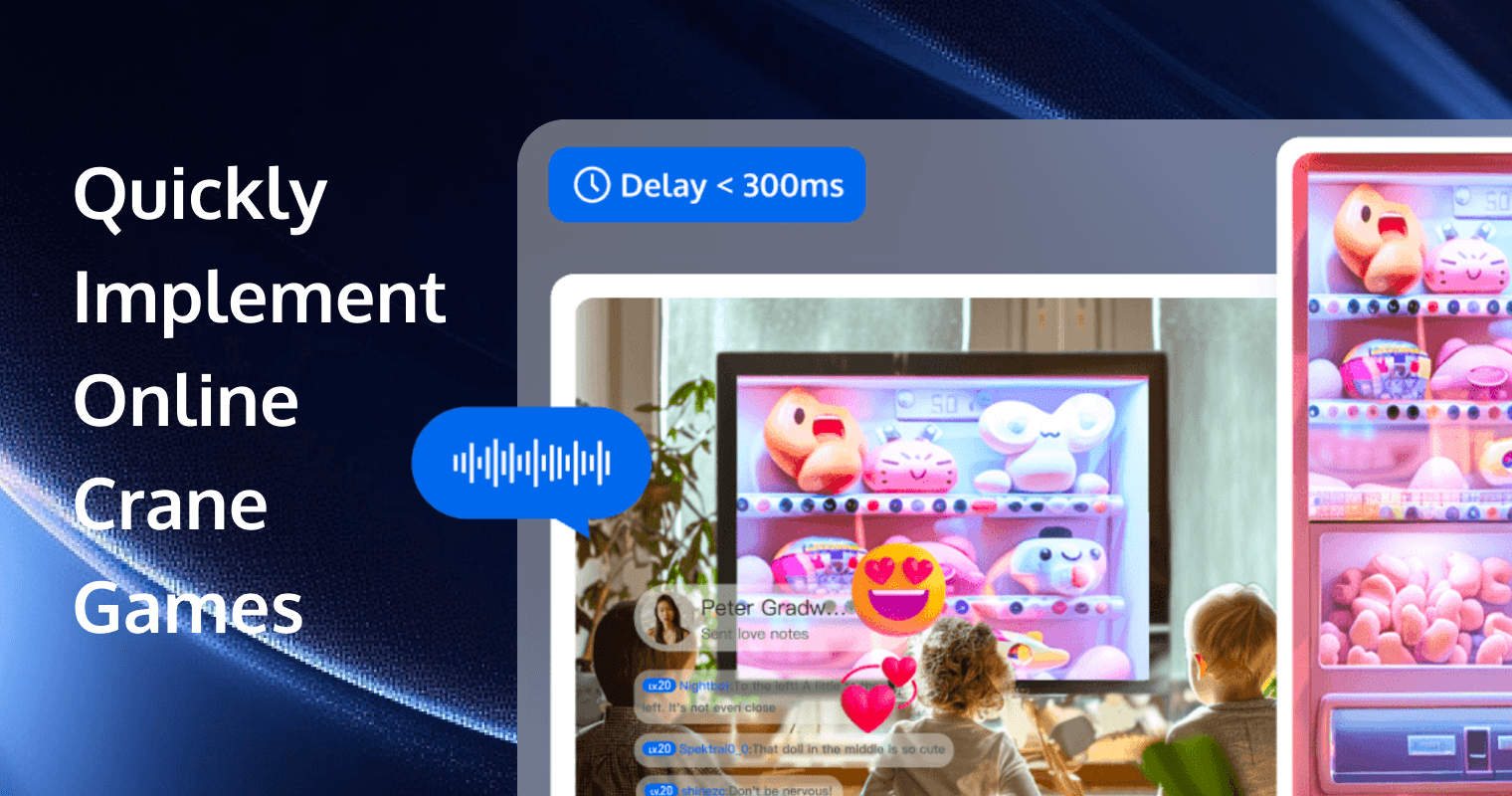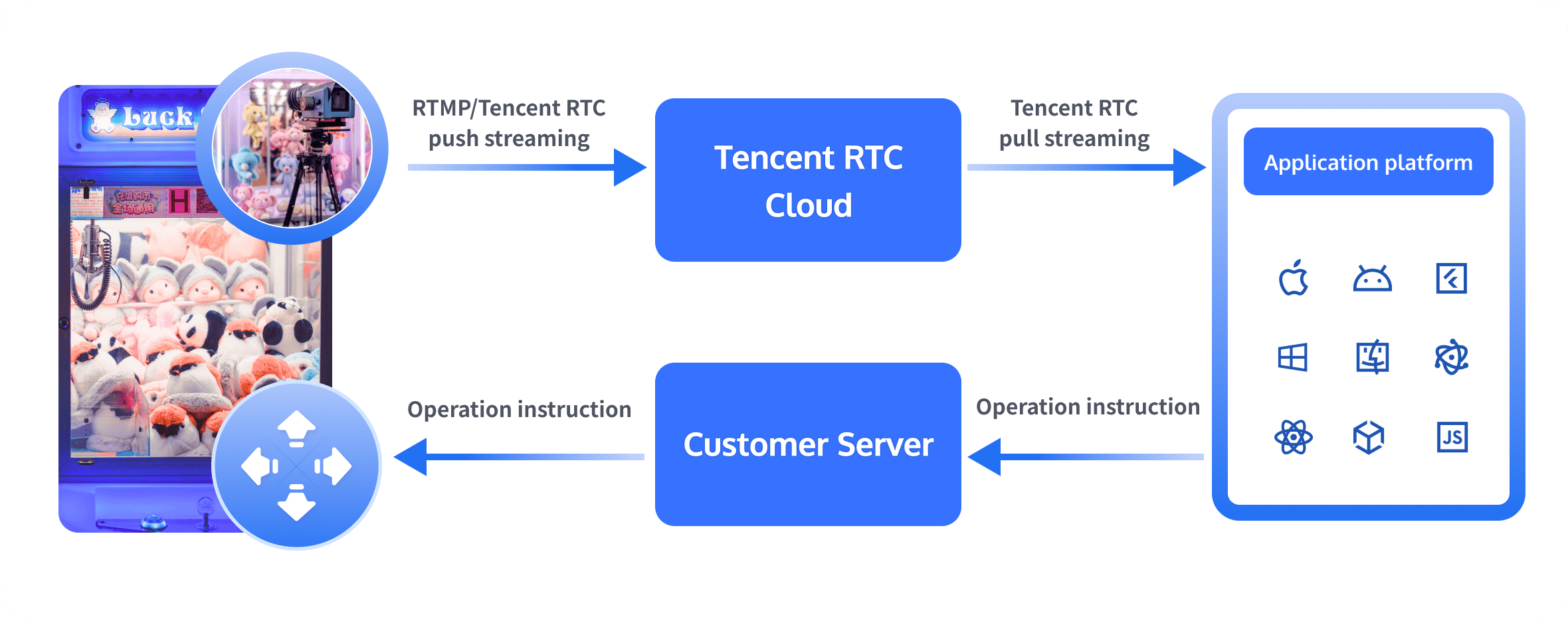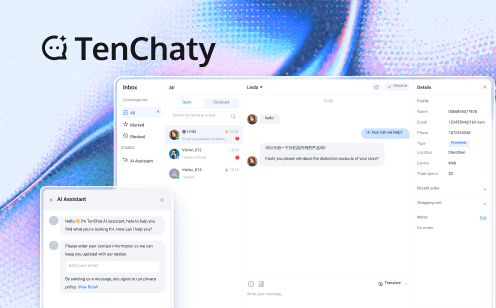
An online crane game leverages video streaming and remote control technologies, allowing users to control the claw of a physical crane machine in real time via smartphones, tablets, or computers. Players can remotely grab toys or other prizes, enjoying an experience comparable to offline claw machines, while also attracting online spectators for interactive engagement. Tencent RTC supports end-to-end audio and video latency below 300ms and enables cross-platform interoperability, allowing users to participate in games anytime and anywhere via WeChat Mini Programs, iOS, Android, and Web platforms. Cloud recording can capture exciting moments of gameplay, which can be used for marketing and enhancing the application's influence.
Tencent RTC Implementation Solution
A complete online crane game scenario involves multiple functional modules, including media services and signaling services. The overall business architecture of the online crane game is as follows: The crane machine control terminal is equipped with two camera positions for video capture and streaming. When a player enters the game interface, they join the corresponding TRTC room, where they can view the video stream captured by the crane machine cameras. After inserting coins or recharging, the player can start controlling the claw to grab toys. Spectators can also join the game to watch the player's gameplay.

Media Service: The media service includes audio and video streaming (push and pull). Most commercial network cameras or streaming boxes support RTMP streaming. By utilizing TRTC's RTMP streaming into room feature, you can push video streams from network cameras or streaming boxes directly into TRTC rooms without any hardware modification. Additionally, some hardware vendors collaborate with TRTC and integrate the TRTC SDK into their network cameras or streaming boxes, enabling direct video capture and streaming to TRTC rooms. Once the crane machine successfully pushes audio and video streams to the TRTC room, both players and spectators can enter the corresponding TRTC room to watch the crane machine's footage in real time.
Signaling Service: The signaling service is responsible for control signaling synchronization. Typically, there are ready-made control hardware modules on the market that support various network communication modes. These modules require only configuration and debugging, with no additional development workload.
Recording Service: The highlight replay feature significantly enhances user viewing and interaction experience. Users can replay exciting moments, especially successful grabs, allowing them to relive the joy of success and analyze techniques to improve their skills. With TRTC's cloud recording capability, recording and replaying these moments is easily achieved.
Why Choose Tencent RTC
Online crane game solutions require signaling to control remote machines, and signaling transmission times are very short, resulting in extremely low latency tolerance. Tencent RTC has optimized the entire transmission chain—including camera capture, encoding, link transmission, reception, decoding, and rendering. Both streaming and playback use TRTC's end-to-end solution, achieving minimum latency as low as 100ms and maintaining average end-to-end latency under 300ms.
First-frame loading speed is also a key factor directly affecting the user experience in online crane games. First-frame latency refers to the total time from when a user clicks into the live room to when the first frame is rendered. Bottlenecks may occur in business interface responses (such as authentication or room information retrieval) or in competition for network resources during component loading and stream pulling. Tencent RTC employs optimizations such as interface preloading (asynchronously requesting authentication and room information in advance to reduce critical path dependencies), RTC-prioritized stream pulling (prioritizing TRTC room entry and stream pulling, then loading other business components after successful TRTC streaming), and dynamic degradation (disabling non-essential features in weak network environments), greatly reducing first-frame latency and enhancing the gaming experience.
In terms of stability, Tencent RTC leverages Tencent Cloud's global network of over 3,200 acceleration nodes and advanced technologies such as intelligent encoding/decoding, HARQ packet loss resistance, and dynamic real-time super-resolution. These measures effectively counteract network jitter, packet loss, and attenuation. Tests show packet loss resistance rates exceeding 80%, jitter resistance over 1000ms, and consistently high-quality online gaming experiences even in weak network conditions.
Additionally, Tencent RTC offers two solutions: RTMP streaming + TRTC playback and full-link TRTC, catering to developers at different stages and with varying requirements. The RTMP streaming + TRTC playback solution requires no hardware modification; you can run a test demo with just two lines of code and integrate general capabilities with ten lines of code. With simple development, you can reduce the latency of existing network cameras or streaming boxes by tenfold.
If you have any questions or need assistance online, our support team is always ready to help. Please feel free to Contact us or join us on Telegram or Discord.

